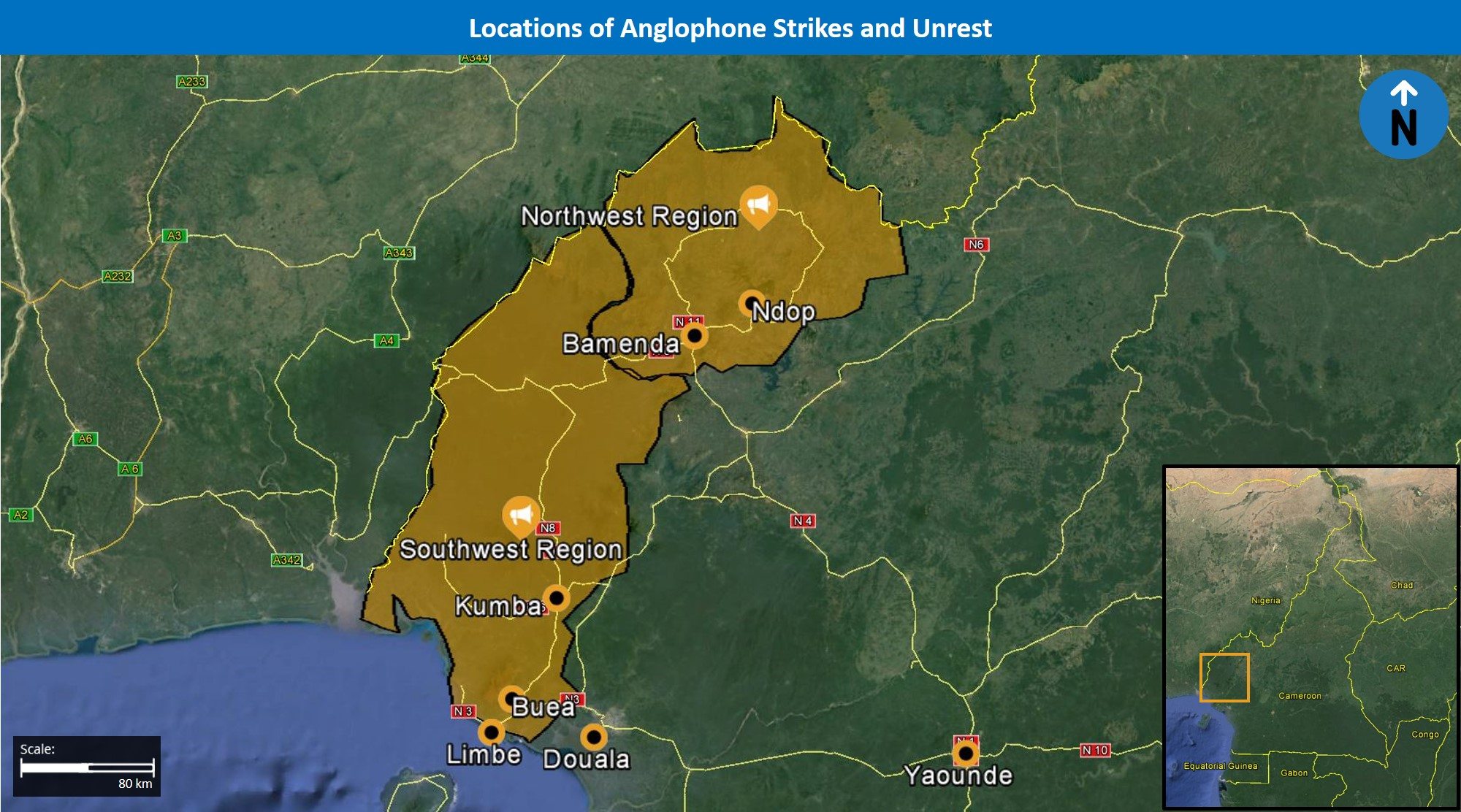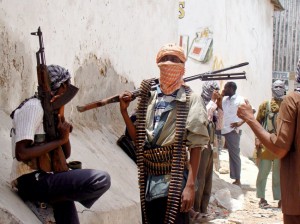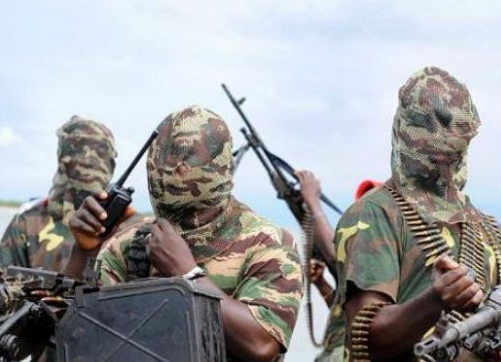Executive Summary
Militants attacked a government school in Dapchi village, Burasari Local Government Area (LGA) in Yobe State and abducted 110 students and two other children on February 19.
Following extensive negotiations with the Nigerian government that resulted in the safe return of 104 of the schoolgirls and the other two children after one month in captivity, Boko Haram has been able to once again garner international attention and portray themselves as a viable threat in Nigeria’s northeastern region despite extensive counterinsurgency operations.
In light of the upcoming general elections in 2019, the girls’ safe return has been projected by President Muhammadu Buhari’s administration as a triumph, which seems to have paved the way for the government’s appeasement stance toward the insurgency.
However, the incident has highlighted the administration’s propaganda of exaggerated success against the militant group and is poised to create backlash in the form of domestic and international criticism for Buhari’s policies concerning the insurgency.
We continue to advise against all travel to the northeastern Nigerian states of Adamawa, Borno, and Yobe, given the ongoing Boko Haram insurgency and extreme insecurity in the region.
Current Situation
Militants attacked a government school in Dapchi village, Burasari Local Government Area (LGA) in Yobe State and abducted 110 students and two other children on February 19.
President Muhammadu Buhari issued a statement on February 24 expressing his concern about the abduction, claiming that the situation was a “national disaster”. On the same day, the opposition People’s Democratic Party (PDP) issued a counterstatement blaming Buhari for issuing exaggerated statistics suggesting that Boko Haram had been completely decimated, a situation that they claim put unsuspecting citizens in danger.
On March 12, Borno State authorities announced the closure of all boarding schools in 25 out of the 27 state’s LGAs due to the threat of Boko Haram militants conducting additional abductions. This came in wake of President Buhari’s decision to engage in negotiations for the release of the schoolgirls.
During the early morning hours of March 21, 106 abductees, including 104 schoolgirls and the two additional children, were dropped off in the middle of Dapchi by their captors, who also warned the locals against sending the girls to Western-style schools. While five of the remaining abductees reportedly died due to exhaustion, one Christian girl remains in the militants’ custody. The Nigerian government characterized the release as “unconditional”, though some sources citing locals indicate that authorities did free several militants who joined the kidnappers, while other sources suggest that the Nigerian government had paid a ransom to secure the girls’ release.
On March 23, while receiving the released girls in Abuja, President Buhari announced that his government was ready to grant amnesty to Boko Haram members who were ready to accept unconditional surrender.
Meanwhile, on April 1, at least 29 people were killed, including six militants, in a multi-pronged Boko Haram attack on Akikaranti, Bille Shuwa, and Bale-Galtimari communes surrounding Borno State capital, Maiduguri, coinciding with the Christian Easter holiday.
Assessments & Forecast
Assessments: Following extensive counterinsurgency operations targeting Boko Haram strongholds, group attempts to reassert presence, garner international, domestic attention
Despite subsequent large-scale security operations targeting well-documented militant strongholds such as the Sambisa Forest and Lake Chad shores in Nigeria’s northeastern region, the militants successfully launched the well-planned abduction of the Dapchi girls. Indeed, this incident resembles Boko Haram’s April 2014 attack on a school in Chibok, Borno State, when 276 girls were kidnapped. The Chibok attack resulted in an extensive international outcry, triggered by a domestic campaign started by the families of the Chibok girls. The #BringBackOurGirls movement put the Boko Haram conflict in the international spotlight, particularly when the former US First Lady Michelle Obama endorsed the campaign. In this context, the Dapchi attack was likely motivated by the prospect of achieving similar notoriety. Additionally, the attack came in response to security forces’ triumphant claims of the near-destruction of the militant group’s presence in the region. Through the Dapchi attack, the militants debunked such claims and reasserted their continued operational capabilities across the country’s northeast.
The Dapchi abductions rendered a successful outcome for the militants. While the federal government characterized the negotiations and the subsequent release of the hostages as completely “unconditional”, it contradicted local reports of the authorities’ release of several militants. Such conflicting reports align with previous allegations against authorities for releasing militants and paying ransom for militants, with the latest incident being the February 10 release of three lecturers from the University of Maiduguri, along with ten police officers abducted by Boko Haram last year. Under these circumstances, the suspected hefty ransom payment will likely be utilized by the militants to enhance and develop their operational capabilities in the region, which may have been hampered, to some extent, by the counterinsurgency operations.
Indeed, the government’s repeated payment of ransoms without any resistance is poised to encourage the militant group to carry out similar large-scale kidnappings. Such a concern was further emphasized by the Borno State authorities’ decision to shut down boarding schools across 25 of the 27 LGAs. Furthermore, the release of militants as part of the ransom payment reintroduces experienced and well-trained fighters to the ranks of the militant group, increasing their operational capabilities. This is further highlighted in the latest Boko Haram multi-pronged attack on April 1 that was reportedly coordinated by Shuaibu Moni, a top Boko Haram commander who was released by the government to facilitate the return of 82 Chibok girls in May 2017. Moni had previously appeared in a Boko Haram video on March 7 taunting the Nigerian security forces and threatening to launch additional attacks.
The theatrical grandeur of the return of the abductees as the militants drove into the center of Dapchi hailed as heroes by the local population for safely bringing back their girls was likely a symbolic attempt by the group to embolden its authority in the region. This sheds light on the militant group’s propaganda aimed towards gaining the locals’ trust and consolidate their influence in their areas of operation. As the militants shook hands with the locals and warned them against the return of the girls to schools for Western education, they compelled the latter to adhere to the militant group’s Islamist ideologies. Through the dramatic aspects of the event, the militants effectively portrayed themselves as legitimate actors in the region, with more control than the federal government in Abuja. Given the communities’ grievances against Abuja, as they continue to feel disregarded and neglected by the government, such an image of Boko Haram is poised to render the locals more susceptible to getting recruited by the militant group. Amidst the ongoing insurgency, these circumstances increase the possibility of better cooperation between the local communities and the militants, with the former providing shelter and engaging in economic transactions with the militants for their own survival.
Assessments: With 2019 elections nearing, Buhari makes strategic shift toward developing appeasement stance to overcome Boko Haram insurgency
Since President Buhari came into office in 2015, negotiations with Boko Haram in their kidnap-for-ransom schemes have become a recurring phenomenon, which includes the 2016 release of 21 Chibok girls and another 82 released in May 2017. Such a stance toward the militant group likely stems from large-scale international and domestic attention that these incidents received. Buhari has attempted to make good on his electoral promise of combating Boko Haram in contrast to the perceived failure of former President Goodluck Jonathan’s administration to effectively defeat the militant group. However, Buhari’s administration has also projected a stronger government resistance to the insurgency, which has led to a distorted perception of success over Boko Haram militancy in Nigeria. Continued militant attacks have highlighted the government’s propaganda in displaying exaggerated data regarding the success of counterinsurgency operations and falsely claiming the defeat of the militant group. This may, to a certain extent, reduce Buhari’s international and domestic credibility.
With Nigeria’s presidential elections slated to take place in 2019, such an approach by Buhari for the safe release of abductees is poised to become his legacy. To further add to his administration’s successes against the insurgency, following the Dapchi events, Buhari appears to have embarked towards an appeasement stance with the latest amnesty deal. It is likely that through these propositions Buhari seeks to strategically portray to the international community his efforts for a peaceful resolution in parallel to the continuation of counterinsurgency operations. Under these circumstances, it is likely that Buhari will attempt to negotiate with the militant group to reduce attacks in exchange for reduced military actions in the northeastern region.
However, the administration’s conciliatory attitude towards the militants may be perceived by some as weak, with negative implications particularly by security forces, which may have a detrimental impact on the fighting morale of the soldiers who are endangering their lives in battle. FORECAST: As such, any attempts by Buhari to negotiate with the militants to reduce attacks in light of the upcoming elections, as well as the latest amnesty deal, may add to Nigeria’s security agencies’ frustration concerning the ongoing nine-year long insurgency and weaken their determination to actively combat it. Additionally, Buhari’s administration is poised to receive substantial criticism from opposition political parties for their weakened stance towards the insurgency and their propaganda of exaggerating military successes, as evidenced by the opposition People’s Democratic Party’s (PDP) statement denouncing the Dapchi deal.
FORECAST: Buhari’s latest amnesty deal offered to Boko Haram is quite similar to an opportunity offered by former President Jonathan in 2013, which Boko Haram’s leader Abubakar Shekau outright declined. As such, it seems unlikely that Boko Haram will accept the latest deal, particularly given that the government does not seem to have any substantial negotiating leverage. Furthermore, the latest April 1 multi-pronged Boko Haram attack continues to highlight that the group remains capable of executing sophisticated large scale attacks in their traditional sphere of influence. Given the group’s resilience in remaining a viable threat in Nigeria’s northeastern region despite the large-scale counter-militancy measures, a persistence of the conciliatory approach by the government is liable to be detrimental to their interests.
Recommendations
Travel to Lagos, Abuja and Port Harcourt may continue while maintaining heightened vigilance and following heightened security protocols regarding criminal and militant activity.
We continue to advise against all travel to the northeastern Nigerian states of Adamawa, Borno, and Yobe, given the ongoing Boko Haram insurgency and extreme insecurity in the region.
We advise to avoid all travel to areas of Nigeria, Niger, Cameroon, and Chad within the Lake Chad Region given the high risk of militancy.



